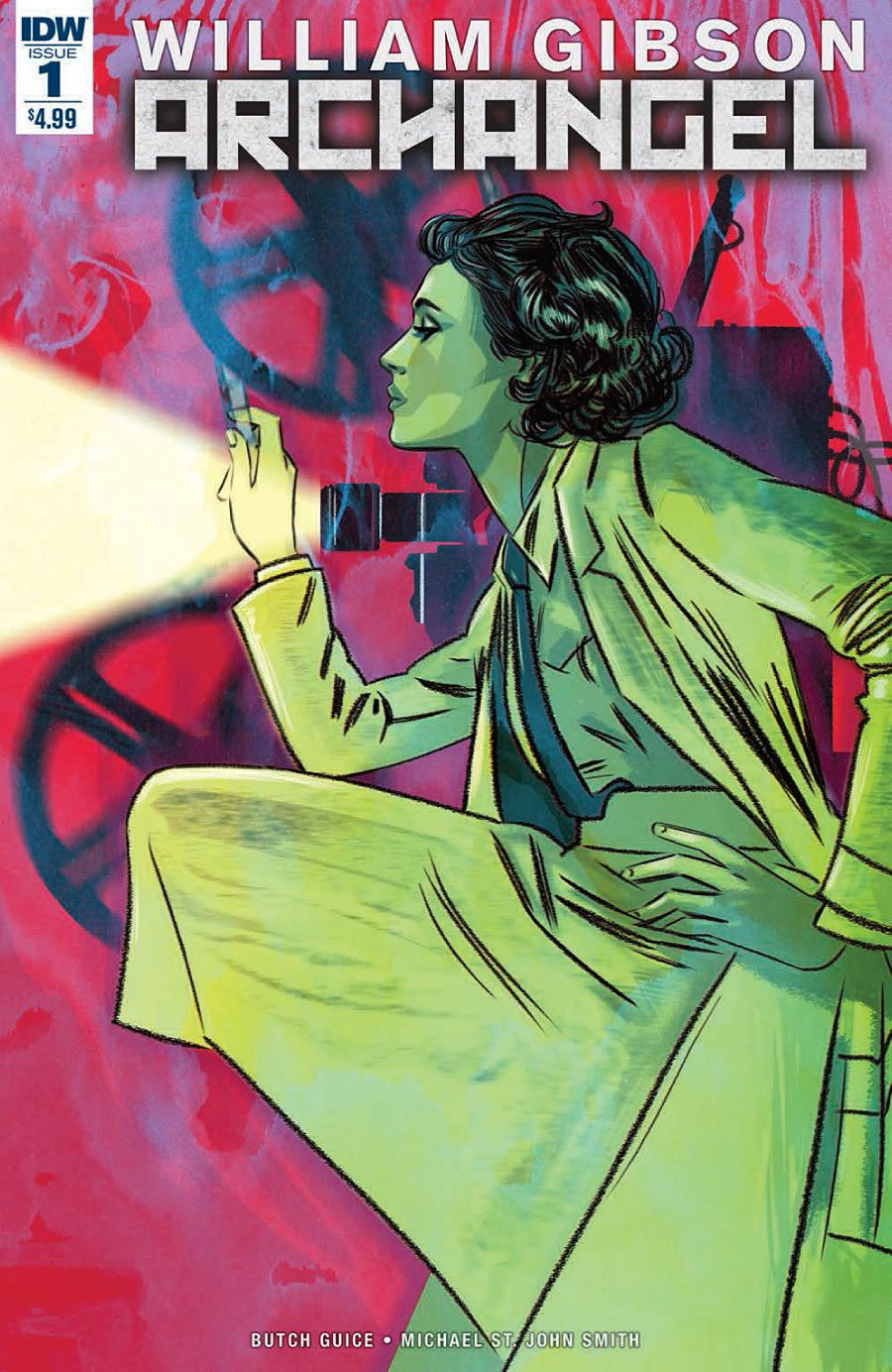The two first scenes of William Gibson and Butch Guice's "Archangel" #1 combine for an attention-grabbing, concise setup of the primary conflict. There are some daunting mentions of "atoms" and "quantum transfer," but the underlying bones are familiar and simple: an evil guy travels back to 1945 to take his grandfather's place. The man in question is an American vice president, and his real mission -- dubbed "Archangel" -- is left sketchy on the details, to be fleshed out in future issues.
Gibson throws the reader right into the action, avoiding any information dumps. After the antagonist is in place in 1945, Gibson quickly introduces several other important characters in both 2016 and 1945. "Archangel" #1 is military fiction even more than it is science fiction, and the revelation of Major Torres' true allegiance and her strategy also have a strong flavor of spy fiction. The conversation between Torres and Dr. Davis is enlightening, but one wonders why Torres didn't blow things up before the VP succeeded in getting back to 1945. It seems that would have saved a lot of trouble, but perhaps that plothole will be closed later.
It's easy to keep track of the cast and their personalities and motivations. Characterization is thin so far, but Gibson does take some time to flesh out Naomi Givens, showing her tenacity and dedication to her RAF work.
Guice's backgrounds are three-dimensional and full of attractive period details. I especially liked the rotary phone and shot of an issue of "Astounding," a science fiction magazine than ran between 1939 and 1960. The scene also has strong color work; for instance, the emerald green and yellow of the cover pop against the brown of the drawer and the gray and white of a gun. Further down on the page, the blurred sky blue filtering through the ceiling also adds mood. Earlier on, the flash of cobalt purple and feathery explosion of white light make the time jump clear.
Unfortunately, much of Rodriguez's other palette choices are bland. He uses of cold monotones throughout the present-day part of the timeline emphasize technology and the lab environment, but this approach also flattens the backgrounds. His fluorescent-lit look for 2016 echoes the plot's pessimism about time travel and politics, but it lacks imagination.
Guice and Tom Palmer's inking is especially beautiful in panels set in outdoor Berlin, especially their use of light and shadow and the moody, silvery reflections created by glass and metal. However, the indoor scenes are less attractive. Guice's facial expressions and figures are slightly stiff, but the look of surprise on the real Major Henderson's face is as strong moment. The emotional beats and pacing are solid. Guice ends the second scene with a creepy note of the VP holding a garrote, leaving the violence off-panel. It's a smart choice that leaves the reader feeling unsettled and tense. Similarly, the downward, charcoal-like strokes on the floor for the last-page cliffhanger look wrong for the perspective, but they also create a sensation of freefall that is appropriate to the situation.
"Archangel" #1 successfully launches a fast-paced science fiction thriller. It's a strong debut in a new medium for veteran science fiction writer William Gibson, but it doesn't do anything new in the genre or the medium yet. The pacing and discipline of the story structure are both impressive, but future issues will need to enlarge the emotional and thematic depth if the entire story is to leave more of a mark.

